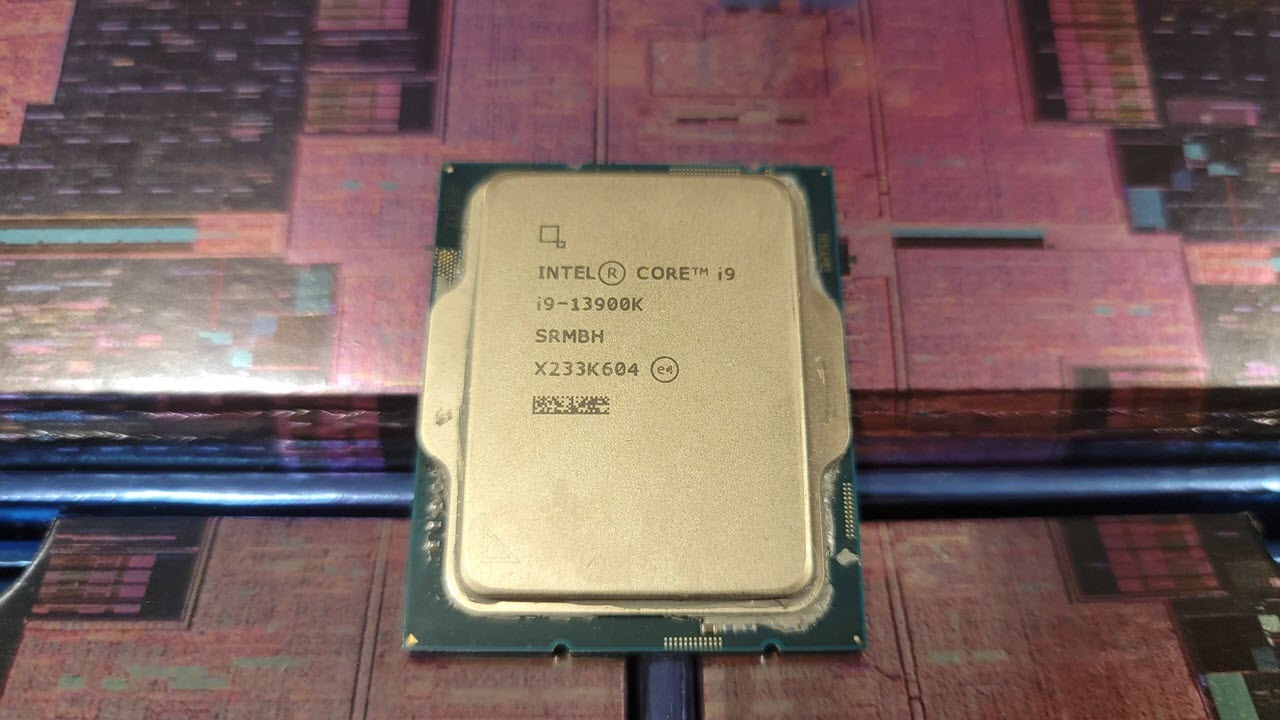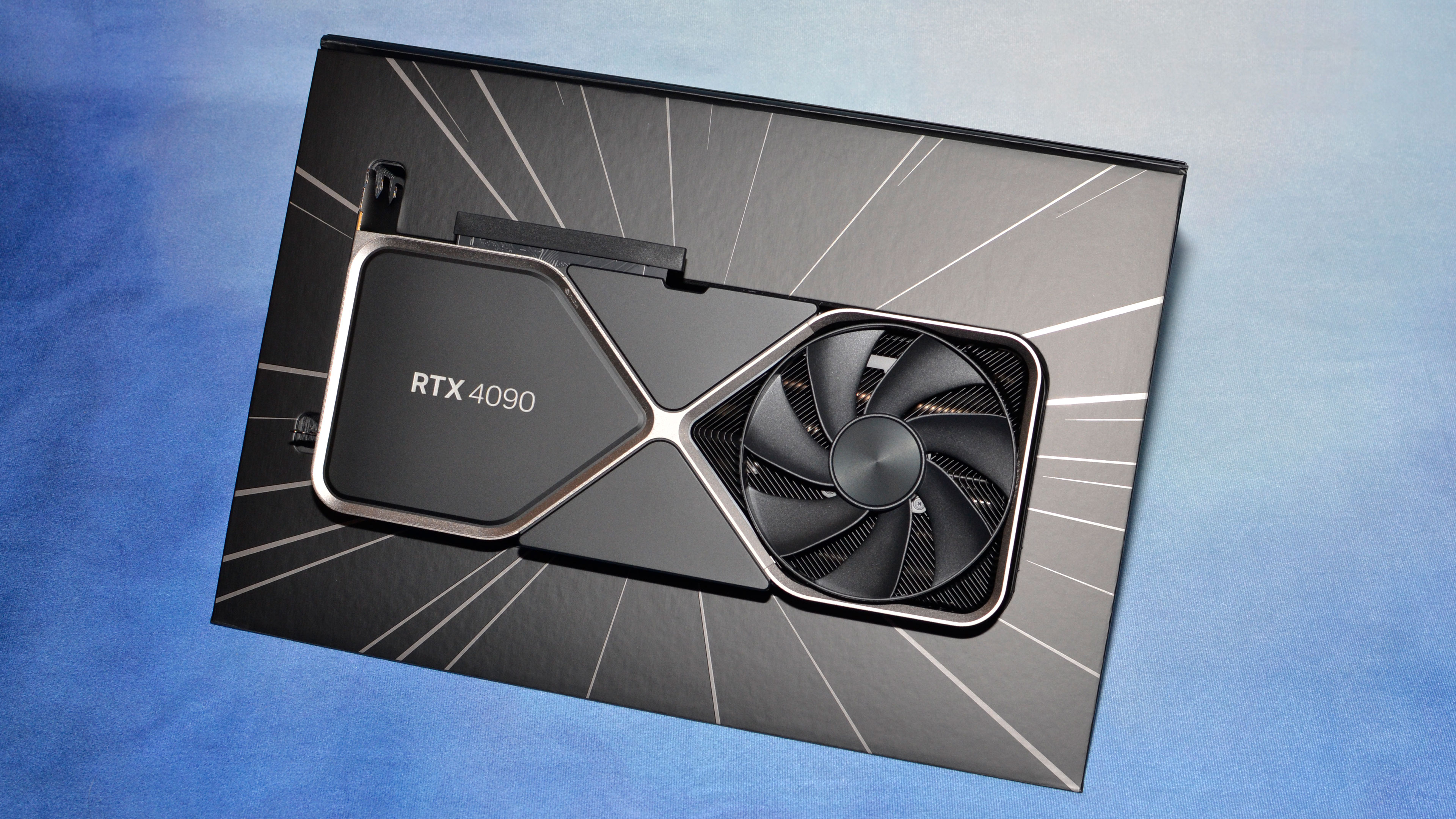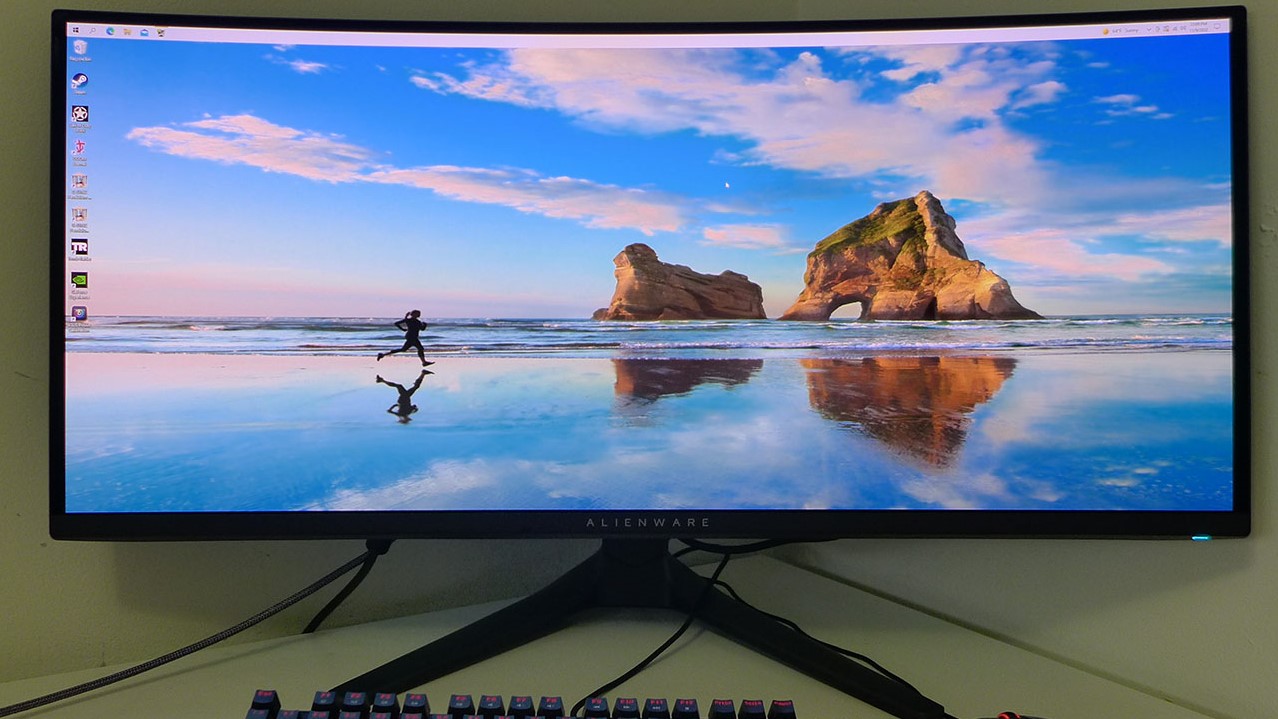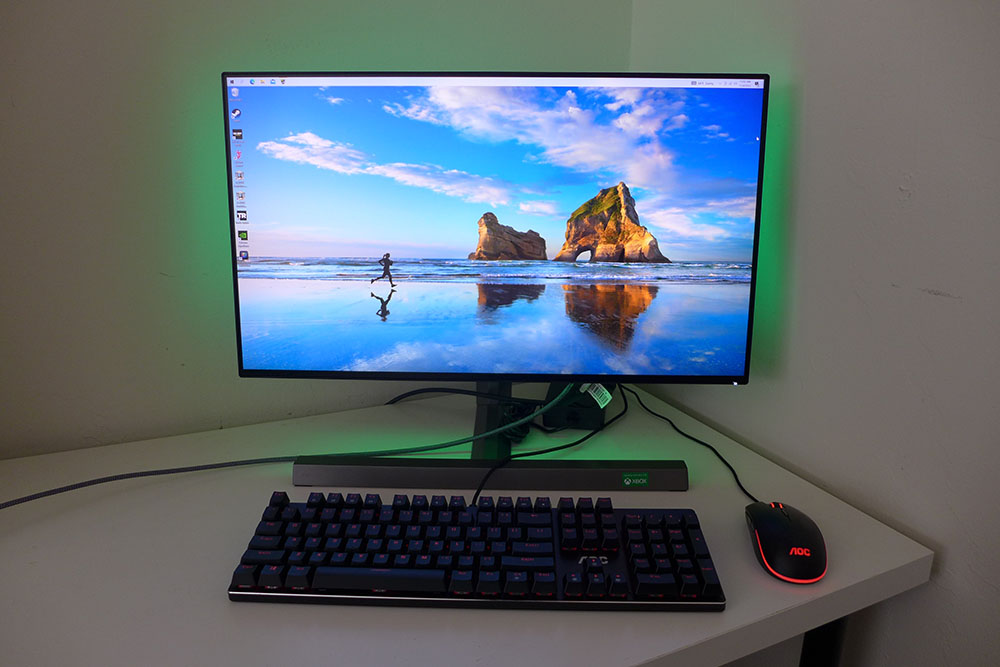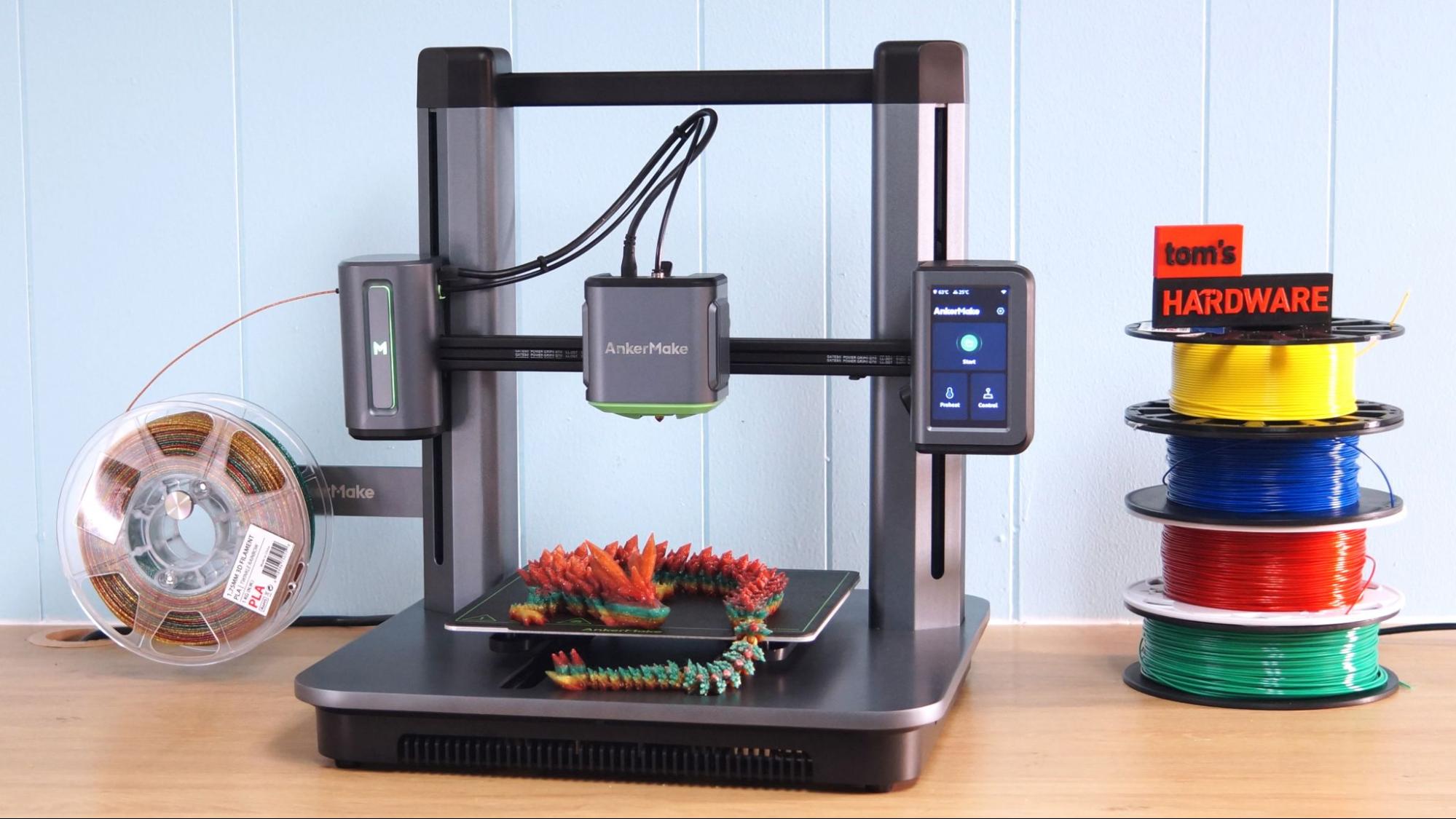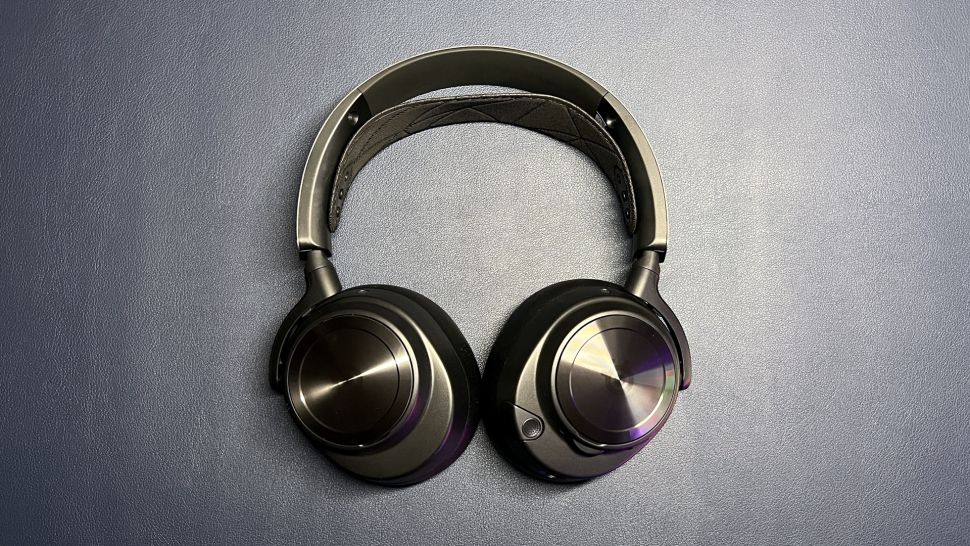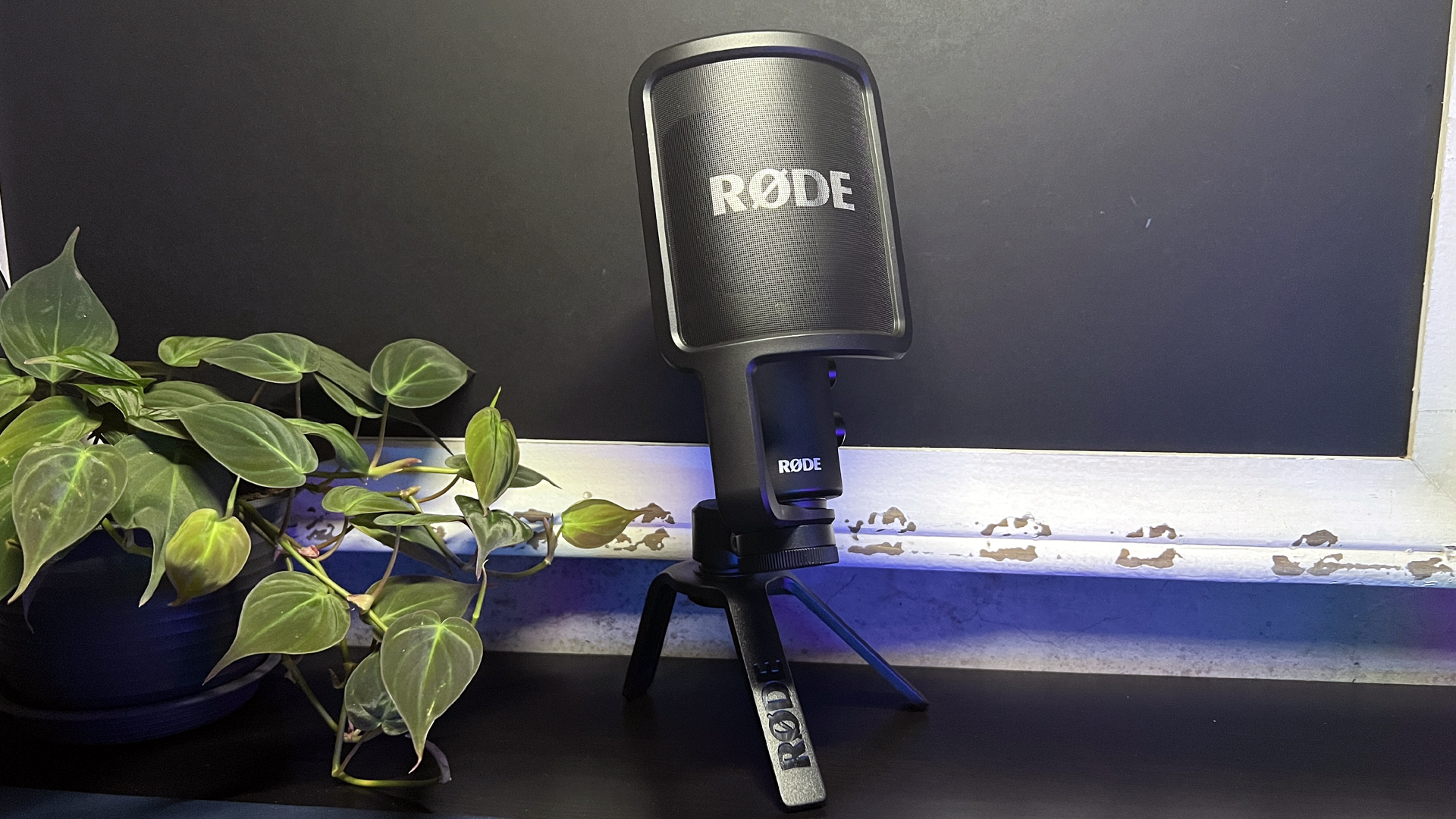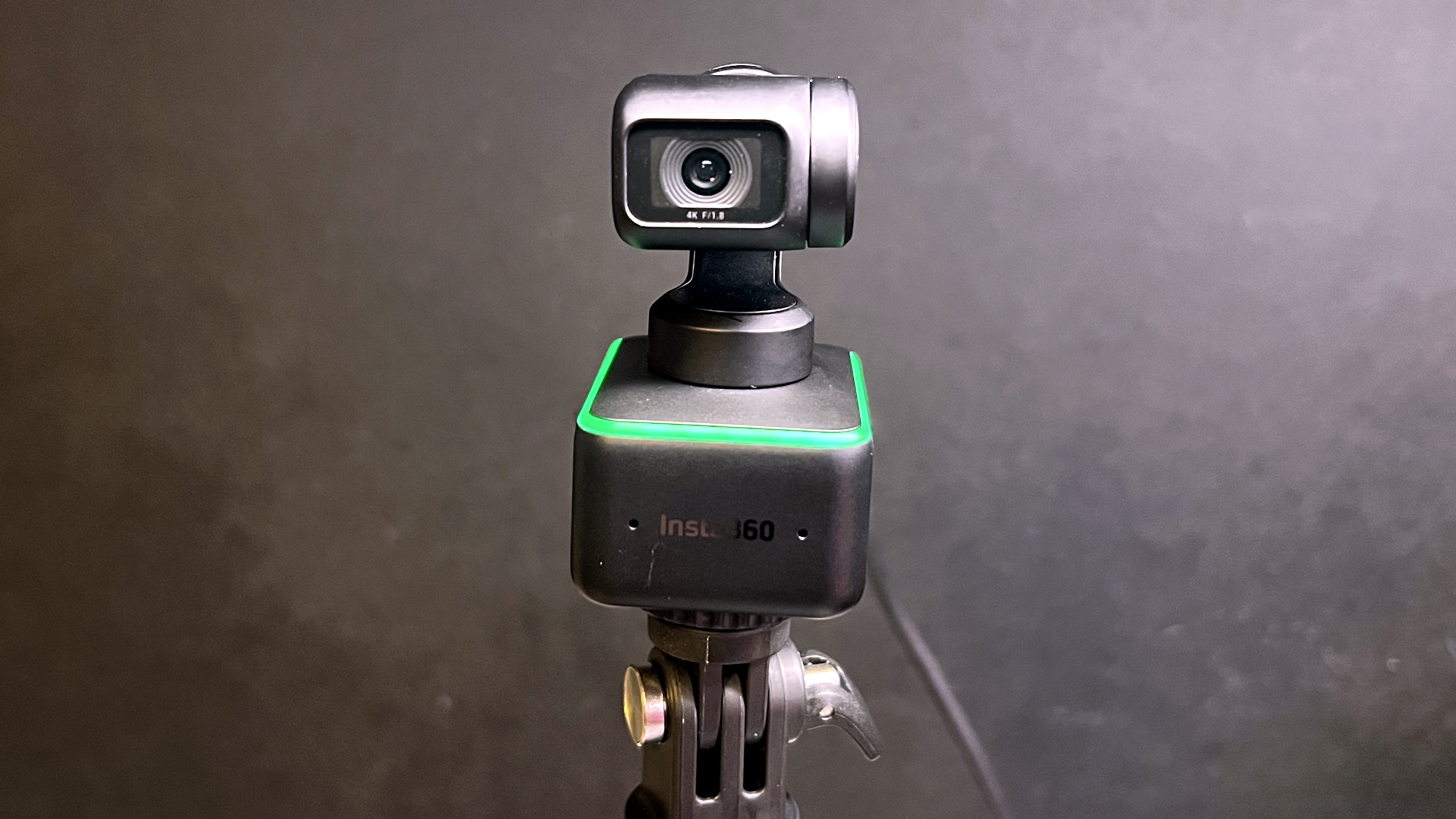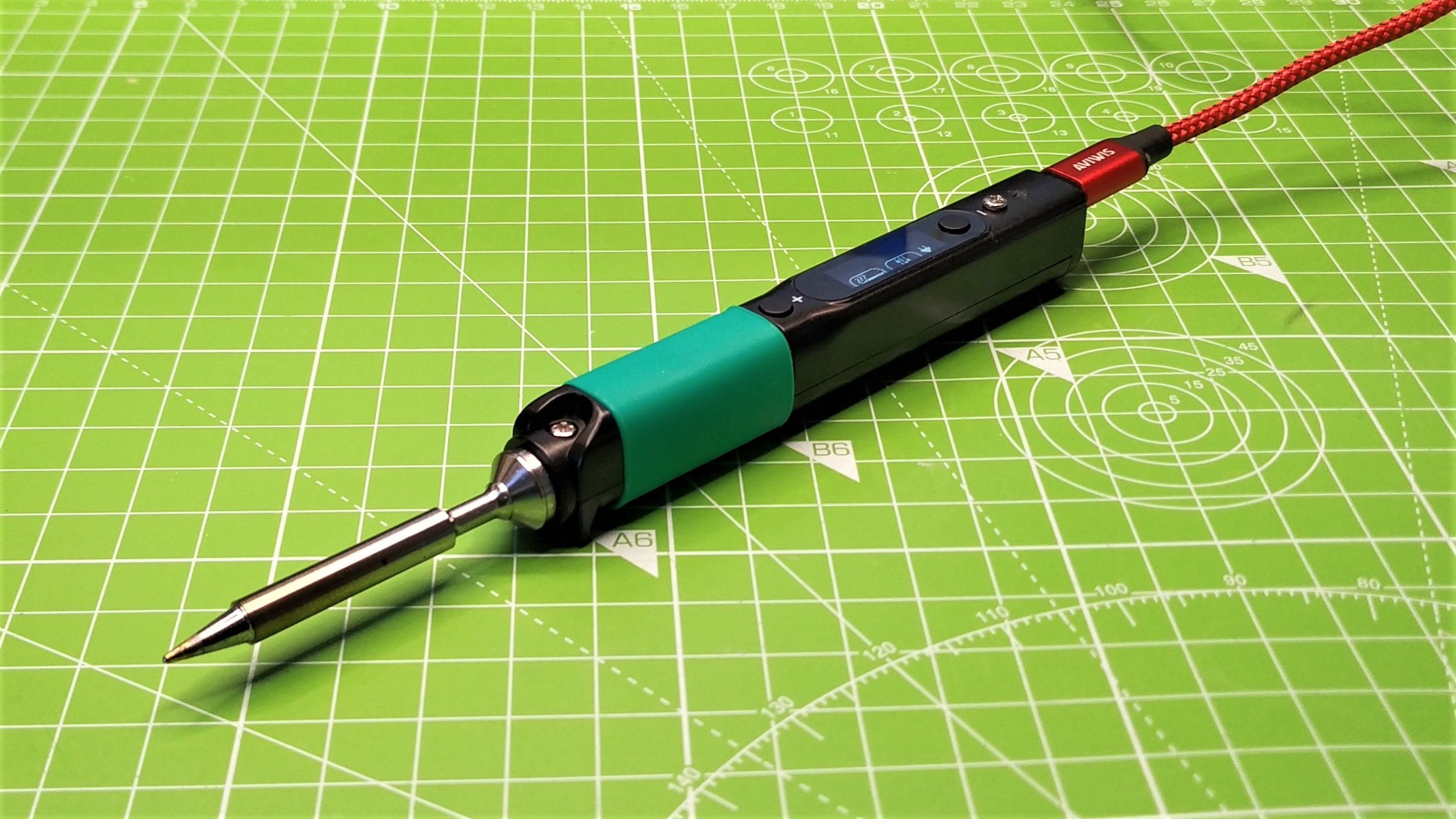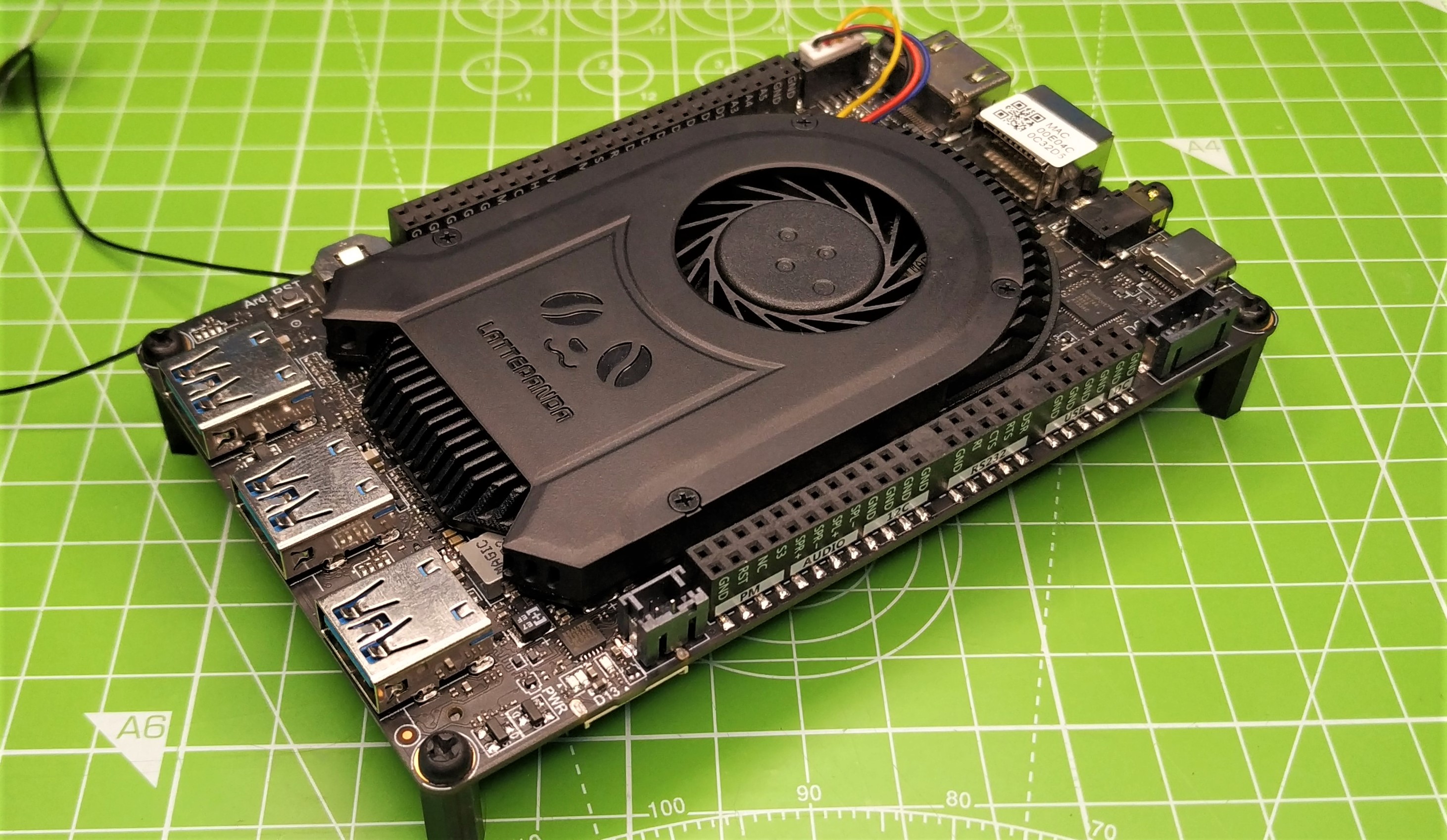Tom’s Hardware Best of 2022 Awards
From CPUs and GPUs to 3D printers and cases, these tech products rose above the rest.
2022 was a year of ups and downs in the enthusiast tech space. On the one hand, manufacturers took some lumps as PC sales declined sharply, but still remained above pre-pandemic levels. On the other, it was a fantastic year in many ways for PC builders, gamers and makers of all budgets and skill levels.
After a couple of years in which crypto miners and scalpers were the only ones who could get their hands on a graphics card, the availability and affordability of GPUs rebounded sharply in mid-2022. And this past fall saw the launches of the fastest consumer GPU ever in the Nvidia RTX 4090 and Intel’s industry-leading Raptor Lake CPUs. Thanks to a glut of NAND flash memory, the price of SSDs fell, while performance continued to improve, though the market is still waiting on next-gen, PCIe 5.0 drives to go mainstream.
In the maker world, a number of new and inexpensive microcontrollers based on the RP2040 CPU gave hobbyists more choices. However, regular Raspberry Pi computers (not Pico boards) became very hard to find, driving prices of everyone’s favorite SBC through the roof. If you are into 3D printing, 2022 was a banner year as printers got cheaper, easier to use and a whole lot faster.
There were so many great devices that launched in the last year that it’s hard to keep track of them all. That’s why we’ve put together a list below of the very best PC hardware and tech products we tested in 2022.
Best CPU: Intel Core i9-13900K
AMD's Ryzen 7000 CPUs looked impressive when they landed in mid-October. But then Intel’s Raptor Lake landed and threw some serious claws all over AM5, with the Core i9-13900K delivering better overall single and multi-core performance, plus better gaming performance, all at a lower price than AMD’s Ryzen 9 7950X.
We don’t typically recommend CPUs this expensive purely for gaming, but in our tests, the Core i9-13900K trounced the best Ryzen 7000 CPU by 13% on average across all our tested games at 1080p, and edged past the one-trick gaming pony Ryzen 7 5800X3D by 4%. Meanwhile, the i9 pulled about even in our multi-threaded productivity testing with AMD’s flagship 7950X, and beat it in single-threaded applications – all for about $100 less than the launch price of AMD’s best chip.
It’s no surprise that AMD’s Ryzen 7000 street prices have since come down quite a bit to compete with Intel. But the price comparisons only look better once you factor in the cost of the platform, with Intel offering up more affordable motherboards (including last-gen Z690 models), and support for far-cheaper DDR4, rather than the still-pricey DDR5. Team Red won’t have anything to truly match or beat the 13900K at least until its newest X3D CPUs arrive, and even then it will have the 13900KS to contend with.
Get Tom's Hardware's best news and in-depth reviews, straight to your inbox.
Read: Intel Core i9-13900K Review
Best Graphics Card: Nvidia RTX 4090
Nvidia pulled the wraps off its Ada Lovelace architecture this year and threw down the gauntlet with the RTX 4090, daring anyone to challenge it for graphics supremacy. AMD responded two months later with the RX 7900 XTX and said, in effect, "The crown is yours, my liege." For pure performance and one of the biggest generational jumps in GPU processing power that we've ever seen, the 4090 does indeed reign supreme, sitting at the top of our list of the best graphics cards.
In our testing, gaming performance improved by an average of 55% compared to the RTX 3090 Ti in rasterization workloads, and 74% in ray tracing games, and that's without factoring in DLSS. But it's not just about gaming. For professional workloads including 3D rendering, AI training and inference, video editing and more, Nvidia easily outclasses the competition — it's 240% faster than the RX 7900 XTX in Blender, for instance.
Of course, the launch wasn't without controversy, with a high starting price that immediately sold out and then ended up going even higher — cards now start at over $2,000. There was also the melting 16-pin adapter controversy, which apparently ended up being blamed on user error and not plugging things in properly. Those issues aside, the 4090 will undoubtedly remain the fastest GPU of this generation, at least until the inevitable 4090 Ti arrives sometime next year. And if you think you want that card, we hope you're saving already.
Read: Nvidia RTX 4090 Review
Best SSD: Samsung 990 Pro
Samsung has long been a leader in the SSD space, but for more than a year, its top consumer PCIe 4.0 drive, the Samsung 980 Pro which launched in 2020, just couldn’t keep up with the competition. Sure, there are some people for whom only a Samsung drive will do, but many others found better performance for less money by purchasing faster drives from Kingston, Western Digital or SK hynix.
This fall however, Samsung’s 990 Pro retook the consumer SSD performance crown. This PCIe 4.0 NVMe drive promises sequential read and write speeds of 7,450 MBps and 6,900 Mbps respectively, along with up to 1.2 million and 1.55 million read and write IOPS. When we tested it, Samsung’s drive dominated the competition in nearly every benchmark, returning the highest marks in everything from random reads to sequential transfers and gaming performance. The 990 Pro’s blazing-fast speed, good power efficiency and strong software package make it the best SSD overall and the best PS5 SSD, too.
Read: Samsung 990 Pro SSD Review
Best Gaming Monitor: Alienware AW3423DWF QD-OLED
The Alienware AW3423DWF aims to impress, and it delivers across multiple fronts. For starters, it has a WQHD resolution (3440 x 1440) spread out over a 34-inch 1800R panel. Speaking of the panel, it’s a gorgeous QD-OLED unit that not only provided deep blacks (thanks to its 1,000,000:1 contrast ratio) but produced stunning colors in both SDR and HDR modes in our tests.
Gamers will be delighted with the 165 Hz refresh rate coupled with AMD FreeSync and Nvidia G-Sync support. Motion processing is top-notch, and there is an abundance of connectivity options (DisplayPort 1.4, HDMI 2.0 and a USB 3.2 hub).
Throw in Alienware’s typical excellent built quality, dialed-in calibration out of the box, plus no real flaws to speak of and the AW3423DWF should be at the top of the shopping list for gamers interested in a premium monitor.
Read: Alienware AW3423DWF Review
Best 4K Gaming Monitor: Philips Momentum 279M1RV
The Philips 279M1RV packs 4K resolution into a 27-inch IPS panel that should be on the radar of those looking for an excellent 4K gaming monitor. Philips isn't a name that we typically think of first when it comes to gaming monitors, but the company has specced the 279M1RV with a 144Hz refresh rate, 1ms response time and AMD FreeSync/Nvidia G-Sync support, which you would expect from this class.
However, the 279M1RV really impressed us with its excellent picture quality. Not only is the display bright (hitting 458 nits in our testing), but it also performed well (for an IPS monitor) in the contrast test at 1,018:1. Color accuracy was at the head of the class, as was its HDR brightness and contrast. No calibration was needed out of the box with the 279M1RV. And for those looking for something a bit "extra" to impress your friends, Philips’ excellent Ambiglow system is present, which provides bias lighting behind the screen to further enhance contrast/color saturation and gaming immersion.
Read: Philips Momentum 279M1RV Review
Best Gaming Laptop: Alienware x14
As people started getting out and about again, 14-inch gaming laptops ready to go anywhere with you were particularly timely. Of those, the Alienware x14 stood out. Despite its small size, it has an attractive, solid design. In testing, we found the mix of an Intel Core i7-12700H and Nvidia GeForce RTX 3060 allow for strong mid-range gaming performance.
It also charges over a regular USB Type-C connector. You'll still want to use Alienware's 130W power brick to push enough electricity for the RTX 3060, of course, but it's great to see a common connector on a laptop this portable so you can trickle charge with other adapters.
Read: Alienware x14 Review
Best Ultraportable Laptop: MacBook Air (M2)
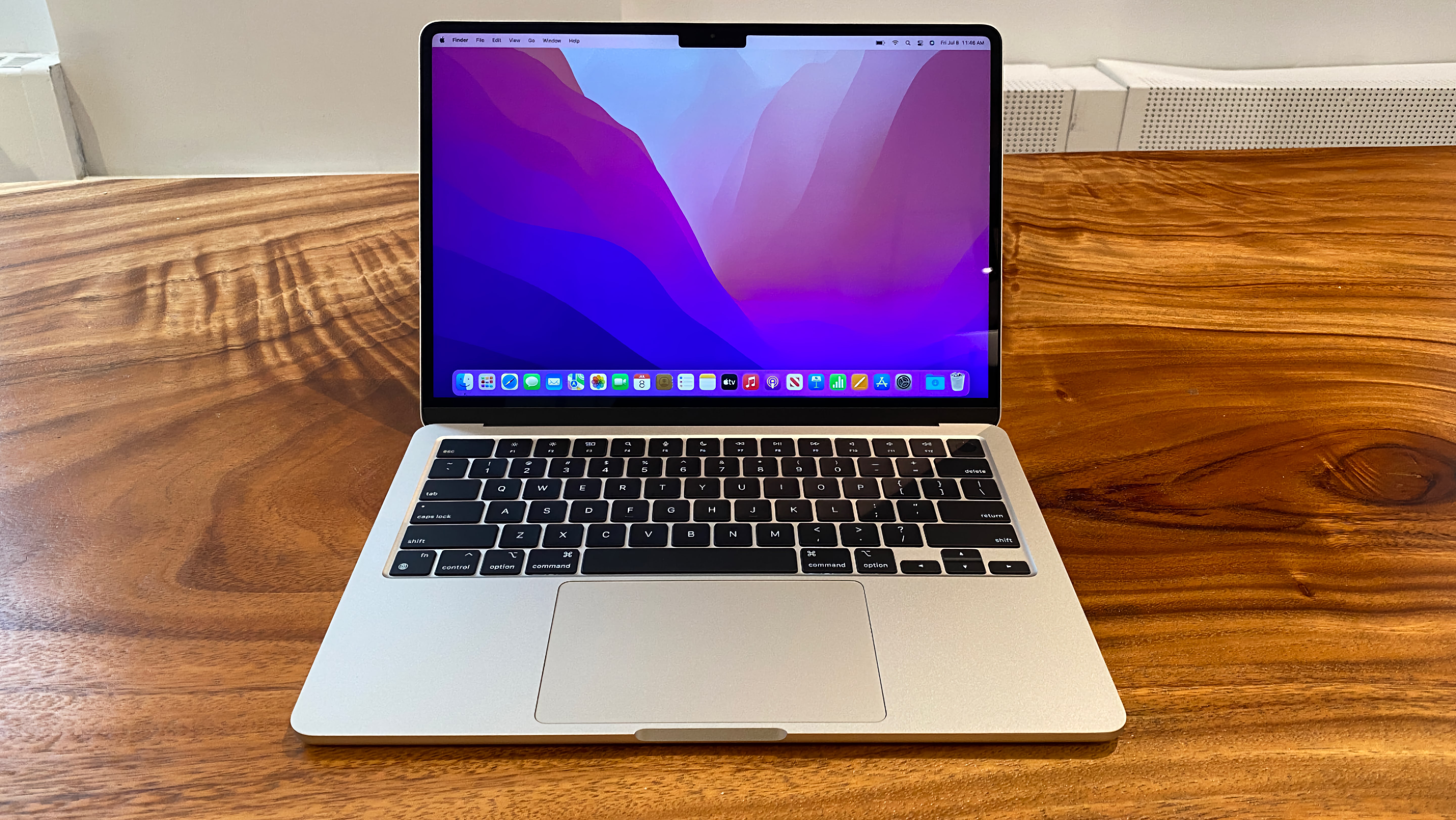
It was about time for Apple to redesign the MacBook Air, perhaps the most recognizable laptop ever, to modernize it around Apple Silicon. The newer design is thinner and ditches the iconic wedge, and bumps the screen up to 13.6-inches, with a 1080p camera in a notch.
It also brings MagSafe, the charger that has saved who-knows-how-many laptops from falling off of tables, back to the Air line. And the M2 processor is powerful and efficient, even without a fan.
The MacBook Air with M2 starts at $1,199, with the M1 version still on sale at the usual $999 spot. That makes it pricier than the previous generation, but if you have the spare cash to get all of the quality of life upgrades, the M2 version is definitely the better option.
Read: Apple MacBook Air (M2) Review
Best 3D Printer: AnkerMake M5
Right now, 3D printers are about where paper printers were in the late 1980s. You can get decent-quality prints, but you’re going to have to wait a long time for them to complete and multi-color output is a cutting-edge, expensive luxury. Anker, a company best known for its lightweight chargers, entered the 3D printer space this year and shook things up.
Its first printer, the AnkerMake M5, promises and actually delivers quality prints at a speed of 250 mm/s, which is five times the speed most competitors can provide. In our tests, we found that the M5 can print a small model in 35 minutes that otherwise would take an hour and 50 minutes to complete. A larger model that would take more than 29 hours on another 3D printer completed in just 9 and a half hours on Anker’s device. After test results from the M5 started appearing in the spring, we saw a slew of other manufacturers respond with their own high-speed printers.
The AnkerMake is not just fast, but elegant and powerful thanks to its aluminum alloy body and plethora of features. Its Direct Drive system allows it to work with hard-to-handle materials such as TPU. Built-in Wi-Fi and a camera allow you to manage prints via a phone app so you can see what’s going on even when you’re out of the house. There’s even an AI system that will stop your prints if it sees them start to fail.
Read: AnkerMake M5 Review
Best PC Case: Fractal Design North
Masterfully mixing mid-century modern design (wood slats and all) and high airflow for today’s thermally demanding CPUs and GPUs, Fractal Design’s North mid-tower chassis easily stands out as the most memorable and impressive case of the year–if not the last few years. Available with either a mesh side panel (as we tested) or tempered glass, it sports chrome accents on the IO and feet on the white model, and brass accents on the black model. This may just be the prettiest PC case ever produced, period.
Thanks to its pair of 140mm fans and an included side bracket (for the mesh model) that can hold another pair of 140mm fans (not included), the North has excellent thermals to match its stunning looks. Note that it can get noisy when its fans are cranked up high, although in most use cases that should never have to happen. The glass side panel may help a bit on the noise front, but likely at the cost of at least some thermal performance, since it lacks the venting of the metal panel.
Read: Fractal Design North Review
Best Gaming Keyboard: SteelSeries Apex Pro Mini
Optical switches are only technically mechanical — they have mechanical parts, but while truly mechanical switches are actuated via physical force, optical switches are actuated via light. And while they don’t offer the best pure typing feel, opticals are excellent for gamers seeking speed and customizability. And SteelSeries’ OmniPoint 2.0 optical switches, which debuted in the Apex Pro Mini, are incredibly customizable.
The Apex Pro Mini (and the Apex Pro Mini Wireless) features a 60 percent layout, which ditches the number pad, navigation keys, and even the arrow keys to save space. But it feels pretty big for an ultra-compact layout — it has two layers of functionality and ships with a slew of default secondary keybinds (which are printed on the sides of the keycaps). The OmniPoint 2.0 switches feature highly adjustable actuation (37 levels, between 0.2mm and 3.8mm) as well as dual-actuation, an interesting (and somewhat confusing) feature that allows for dual keybinds on one key (tied to different actuation points).
If you’re worried that a 60 percent layout won’t be enough keyboard for you, the Apex Pro Mini is worth checking out. With the ability to customize each key to an incredibly detailed degree, this compact keybaord might actually be more keyboard than you need.
Read: SteelSeries Apex Pro Mini Review
Best Gaming Mouse: Razer DeathAdder V3 Pro
It’s difficult to pick just one best gaming mouse across the board, because different games have vastly different requirements. But it’s not difficult to pick the best gaming mouse of 2022: Razer’s ergonomic redesign of its best-selling DeathAdder line — the DeathAdder V3 Pro — is practically perfect.
The DeathAdder V3 Pro sports a streamlined silhouette with a split key cover design and five programmable buttons. It features Razer’s Focus Pro 30K optical sensor, which has a max sensitivity of 30,000 DPI, a tracking speed of 750 IPS, and up to 70g of acceleration. And it’s incredibly lightweight at just 2.22 ounces (63g) — unlike many Razer peripherals, this mouse has been stripped of unnecessary features such as RGB lighting and Bluetooth (it’s wireless via 2.4GHz wireless only).
We were initially skeptical of Razer’s claimed “next-gen ergonomics” (the DeathAdder V3 Pro looks different from its predecessor, but not that different), but hands-on testing turned us into believers. This mouse is so inexplicably comfortable and lightweight that it feels like nothing at all — like a flawless extension of your arm. It also boasts lightning-fast responsiveness, seamless tracking, and is compatible with Razer’s 4,000 Hz HyperPolling Dongle, making it the perfect mouse for even the most competitive Esports players.
Read: Razer DeathAdder V3 Pro Review
Best Gaming Headset: SteelSeries Arctis Nova Pro
We won’t say audio quality is an afterthought in most gaming headsets, but it’s not necessarily a priority. It’s hard to find a headset that has gaming features (such as channel mixing, virtual surround, multi-device connectivity, and a decent microphone) that can also double as a music headset — let alone as a pair of headphones that you can wear away from your PC. The SteelSeries Arctis Nova Pro tries to do it all: a gaming headset with audiophile-quality sound in a lifestyle package... and it does a surprisingly good job.
The Arctis Nova Pro is the next evolution in SteelSeries’ Arctis line, but it doesn’t look like its predecessor. The Nova Pro has been given a sleek, lifestyle-esque redesign, with machined steel speaker plates and a fully-retractable boom mic that blends seamlessly into the earcup when tucked away. The Nova Pro comes in both wired and wireless versions, both of which sport custom-built 40mm hi-fi speaker drivers. The wired Nova Pro is bundled with SteelSeries’ GameDAC Gen2, which offers multi-device connectivity and boosts audio resolution and quality to audiophile levels. The Nova Pro Wireless doesn’t come with a DAC, but ships with a wireless base station that offers multi-device connectivity and doubles as a charging dock for the headset’s unique swappable battery system (the headset comes with two batteries, each of which carries a 22-hour charge and can be seamlessly swapped without losing connection).
What’s most impressive about the Arctis Nova Pro is its audio quality — even over wireless, the drivers produce detailed, multi-layered sound with a much more neutral-leaning profile than is normally found in gaming headsets. For gaming, the Nova Pro Wireless’ base station can be plugged into two devices (e.g. PC and console) for multi-device 2.4GHz wireless connectivity. For the street, the headset also offers Bluetooth connectivity and active noise cancellation, which is a pretty rare feature in headsets, gaming or otherwise.
Read: SteelSeries Arctis Nova Pro Review
Best Gaming Chair: Herman Miller x Logitech G Vantum
The gaming chair space is largely dominated by wing-backed bucket seats that look like they were plucked from the passenger side of a Corvette Stingray. Racing chairs have a certain aesthetic, for sure, but they’re designed for, well, racing — on a track, not in front of a 4K monitor. What’s better for sitting in front of a screen (or four screens): the decidedly not racing-inspired Herman Miller x Logitech G Vantum gaming chair.
The Vantum is the first original (and second-ever) collaboration between luxury office furniture maker Herman Miller and gaming peripherals sub-brand Logitech G. Featuring an “active, forward-leaning alignment,” adjustable lumbar support, passively-adaptive thoracic support, and an adjustable headrest, the Vantum feels better than it looks. It also looks better than it looks, with a lightweight glass-filled nylon frame that’s sleeker and more refined-looking in person.
The Vantum borrows a lot of features from Herman Miller’s more expensive Aeron and Embody chairs. And while it doesn’t feel quite as sturdily-built as those chairs, the comfort is definitely there — as is the comforting 12-year warranty.
Read: Herman Miller x Logitech G Vantum Review
Best Microphone: Rode NT-USB+
If you really want to step up your streaming game, pick up a standalone USB microphone. But not just any mic — the Rode NT-USB+ is a solid update to what was already a very impressive USB condenser microphone (and it still comes with its own detachable pop shield).
The Rode NT-USB+ is an update to the Rode NT-USB, which was first released in 2014. The NT-USB+ retains its predecessor’s sturdy, professional design on the outside, with only a minor tweak to switch from a USB-B port to a more current USB-C port. It may look the same on the outside, but it’s got some pretty impressive updates on the inside: enhanced circuitry, Rode’s Revolution Preamp technology, and an internal DSP that allows for advanced audio processing. Like the NT-USB, the NT-USB+ comes with a detachable pop shield and a tripod desktop stand, and has an on-mic headphone jack for zero-latency monitoring (as well as a volume knob).
It records excellent, detailed vocals and packs louder, cleaner, and crisper audio with a lower noise floor than its predecessor — thanks to the Revolution Preamp. While it works perfectly out of the box, you can also use Rode’s software to activate the mic’s DSP for on-the-fly audio processing (including a compressor, noise gate, high pass filter, and Aphex enhancements “Aural Exciter” and “Big Bottom”).
Read: Rode NT-USB+ Review
Best Webcam: Insta360 Link
Now that we’re no longer in a pandemic-induced webcam drought, 4K webcams are popping up all over. But it’s not just about resolution, especially when most webconference apps limit your stream to 1080p (or lower) anyway. To really stand out, a 4K webcam needs to bring more than just offensively high-resolution imagery to the table — and the Insta360 Link brings a lot more.
The Insta360 Link is an AI-powered 4K webcam that sits on its own mini 3-axis gimbal. It produces excellent images practically out of the box, with some of the best auto-exposure and auto-white balance we’ve seen on a webcam (or any camera). Its low-light images aren’t as evenly lit as, say, webcams with Logitech’s built-in RightLight technology, but this isn’t necessarily a bad thing — those webcams tend to produce very flat pictures, while the Link does a good job of making the subject look good without flattening out the scene.
But it’s not just about looking good (okay, it sort of is) — the Insta360 Link also has several features that will appeal to various types of content creators. These include a whiteboard mode (to focus on writing on a whiteboard), a desktop mode (to focus on writing/objects on a desk), and an AI-tracking mode that can keep a subject in frame as they pace, dance, or otherwise move about. That's one way to keep people awake at your next remote meeting.
Read: Insta360 Link Review
Best Microcontroller Board: Raspberry Pi Pico W
For $6 the Raspberry Pi Pico W is plenty of board for many projects. We get the ease of a well-established GPIO, small form factor and a plethora of programming language choices. Connecting to the world takes five lines of MicroPython code and, from there, you are free to build what you want.
We loved that the board shared the same layout as its non-Wi-Fi predecessor, enabling it to enjoy a vast ecosystem of accessories. For those new to the Internet of Things, the Pico W offers a great opportunity to get your projects online and working with remote data.
Read: Raspberry Pi Pico W Review
Best Soldering Iron: Pinecil v2
Cheap soldering irons are rarely the best soldering irons, but Pine64’s Pinecil v2 offers a great soldering experience for very little cash. $25 is all you need to spend for a soldering station that fits in your pocket. Just make sure it's been turned off for a good while before attempting that last bit. Temperature control and easily replaceable soldering tips make this a versatile soldering solution.
When we tested it, we loved the low cost and ease of use this iron brings to the workshop. Pinecil’s operating system is easy to use and we saw precise temperature control. It gets hot fast, too! Mere seconds after setting a temperature we were ready to solder.
Read: Pinecil V2 Review
Best SBC: LattePanda 3 Delta
In a world of low-powered Arm SBCs, the LattePanda 3 Delta stands out from the crowd thanks to its versatile nature. You get an Intel Celeron N5105 running at a base 2 GHz, but with a boost clock rate of 2.9 GHz, 8GB of LPDDR4 RAM and 64GB of eMMC storage. You also get M.2 NVMe and SATA expansion slots and an onboard Arduino-compatible microcontroller.
We really appreciate the Arduino capability, which can be used independently of the Intel CPU. Being an x86 based system, the LattePanda 3 Delta is well supported by Windows 10 and 11 and many Linux distros. This board can serve as either a low-power desktop replacement, or for adding extra computational power to a robot build.
Read: LattePanda 3 Delta Review
Best Raspberry Pi Accessory: Argon EON
DIY Raspberry Pi-powered network storage ranges from a simple hack involving a USB drive and a bare Raspberry Pi to an elaborate home rack mount system. But what if we could have a NAS and make it look stylish? The Argon EON is clearly taking style cues from the famous Flatiron building. Inside this sci-fi case is a home for your Raspberry Pi and up to four SATA drives, along with great cooling.
The excellent build exudes quality and thoughtful design. The top-mounted fan keeps everything cool while staying quiet. Building the NAS requires just a screwdriver, helpfully provided. Within an hour you will be serving your content across your home, all from a Raspberry Pi 4.
Read: Argon EON Review
Tom's Hardware is the leading destination for hardcore computer enthusiasts. We cover everything from processors to 3D printers, single-board computers, SSDs and high-end gaming rigs, empowering readers to make the most of the tech they love, keep up on the latest developments and buy the right gear. Our staff has more than 100 years of combined experience covering news, solving tech problems and reviewing components and systems.
-
hotaru251 Replythe one-trick gaming pony Ryzen 7 5800X3D by 4%
yes, the 5800x3d isnt "best" in multiple things, but a one trick pony?
the things still a beast for gaming AND production :|
and fact 13900k is 2x its price <_< (4% in a non listed game isnt worth $300)
off that bit: might check out that soldering iron...been wanting to get 1 for the vehicle. -
PlaneInTheSky You have almost all the tech people buy and never use in 1 article.Reply
-Raspberry Pi
-3D printer
-soldering iron
-360° camera
Only thing that is missing is VR goggles. -
cknobman Really dissapointed with the your picks for graphics card and gaming laptop.Reply
Giving a best of year award to a graphics card costing double what it should is crap.
Alienware's are overpriced and underperforming compared to its competitors.
Were any of your selections influenced by vendors or financial incentives? -
Udyr Reply
CIA wants to know your location.cknobman said:Were any of your selections influenced by vendors or financial incentives? -
HideOut Best SSD, Samsung Gen 4 drive thats wildly to expensive? *but includes a link you can use so THG gets a kickback.Reply
Perhaps when all current platforms include PCIe Gen 5 a Gen 5 drive would have been a better choice. Many out there for about the same money that do about 7GB/sec, or 2.5G faster than the one you chose. -
JarredWaltonGPU Reply
How do you determine what it "should" cost? Because the market is speaking loudly that even $1600 is "too cheap" for what the RTX 4090 delivers. It's undoubtedly not all from the gaming sector. When Nvidia sets a price of $1600 as the baseline and nearly every card currently available for the past two months has been sold for $2000+, you were never going to see $1200, or the mythical $800 that you've pulled out of GOK. If you were to say the RTX 3090 was too expensive at $1500, I could agree with that. It was 10% faster than a 3080 for theoretically more than double the price.cknobman said:Really dissapointed with the your picks for graphics card and gaming laptop.
Giving a best of year award to a graphics card costing double what it should is crap.
Alienware's are overpriced and underperforming compared to its competitors.
Were any of your selections influenced by vendors or financial incentives?
Now the market has shifted and you get a card that's over 50% faster than the previous generation "$2000" card, 30% faster than the new $1200 card, and anywhere from 25% (rasterization games) to 94% (ray tracing games) to 240% (Blender) to five times or more faster in AI training and inference compared to AMD's latest and greatest. And that should cost less than a grand? I mean, it would be lovely if it did, but it's never going to happen. Graphics cards are now for more than just gaming, and even if you're mostly interested in gaming, the absolute fastest card at any time is not going to ever drop below $1000 again. That's the reality we now live in. -
itchyeyes Much as I like gaming, it would be really nice if these categories weren’t all so gaming centric. People do use computers for other things.Reply -
USAFRet I was with you until that 3D printer.Reply
Its main claim to fame is 'fast'.
Which is NOT a bad thing, but its not even finished yet. Barely out of kickstarter phase.
Give it a year of refinement, and then we'll see. -
drivinfast247 Reply
2 Raspberry Pi are running OctoPi for my 3d printers and I used my soldering station 3 times this month so far. LolPlaneInTheSky said:You have almost all the tech people buy and never use in 1 article.
-Raspberry Pi
-3D printer
-soldering iron
-360° camera
Only thing that is missing is VR goggles.
